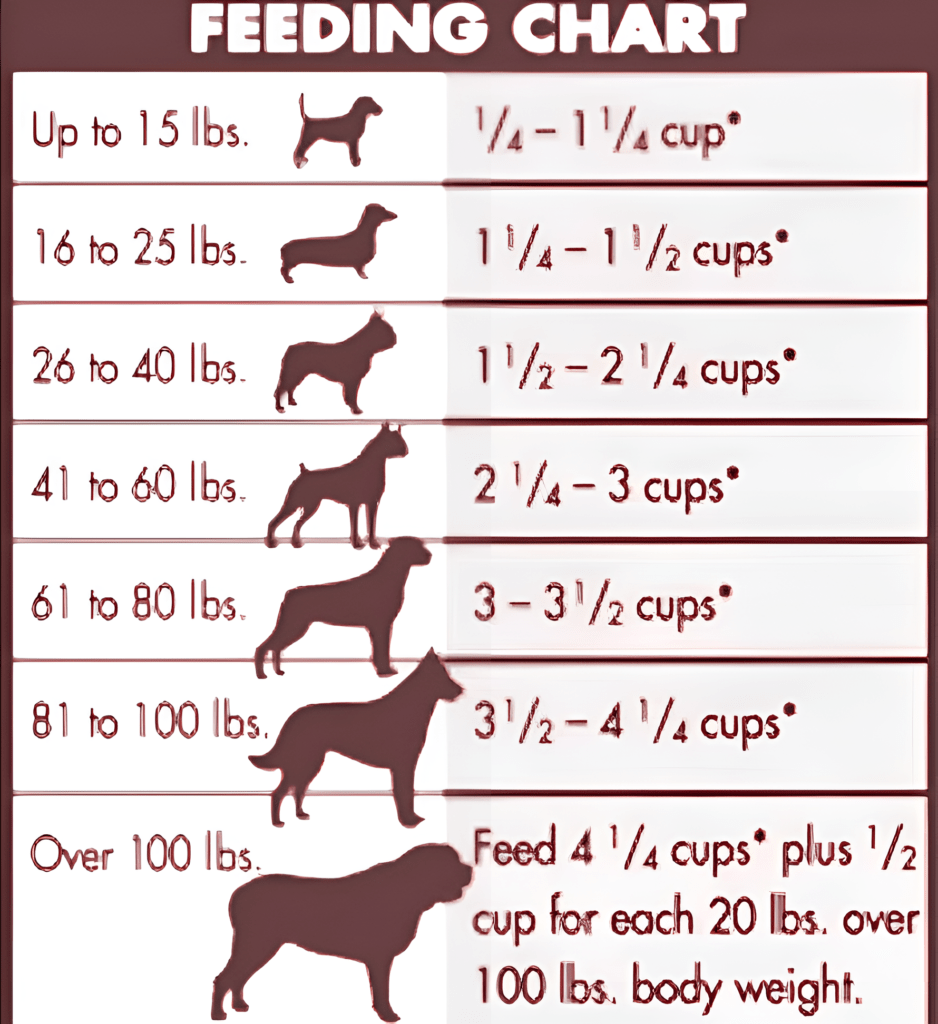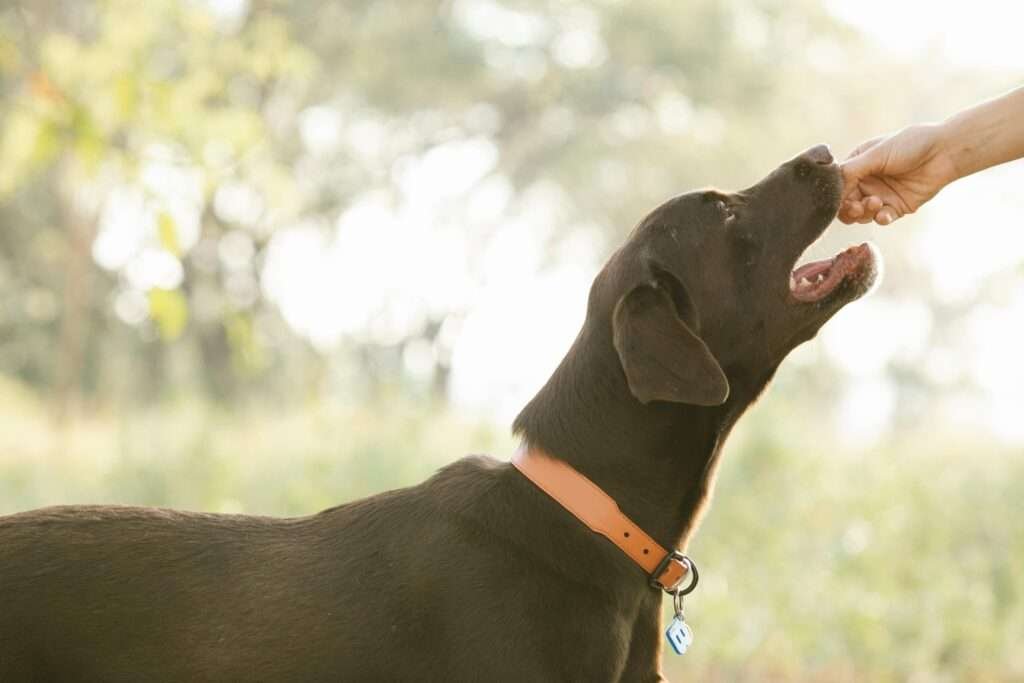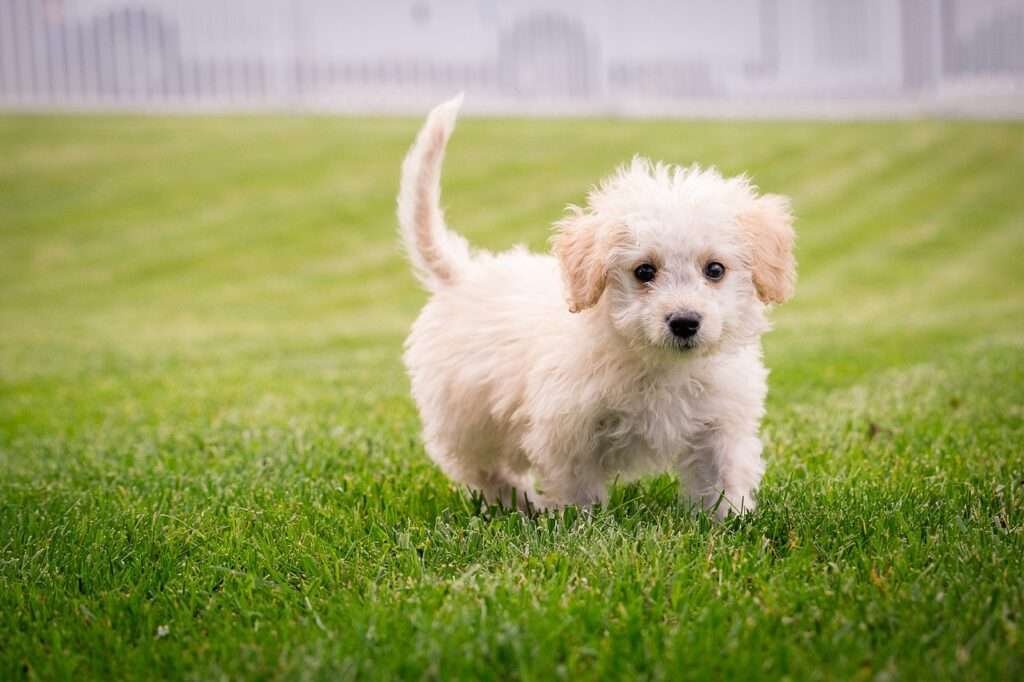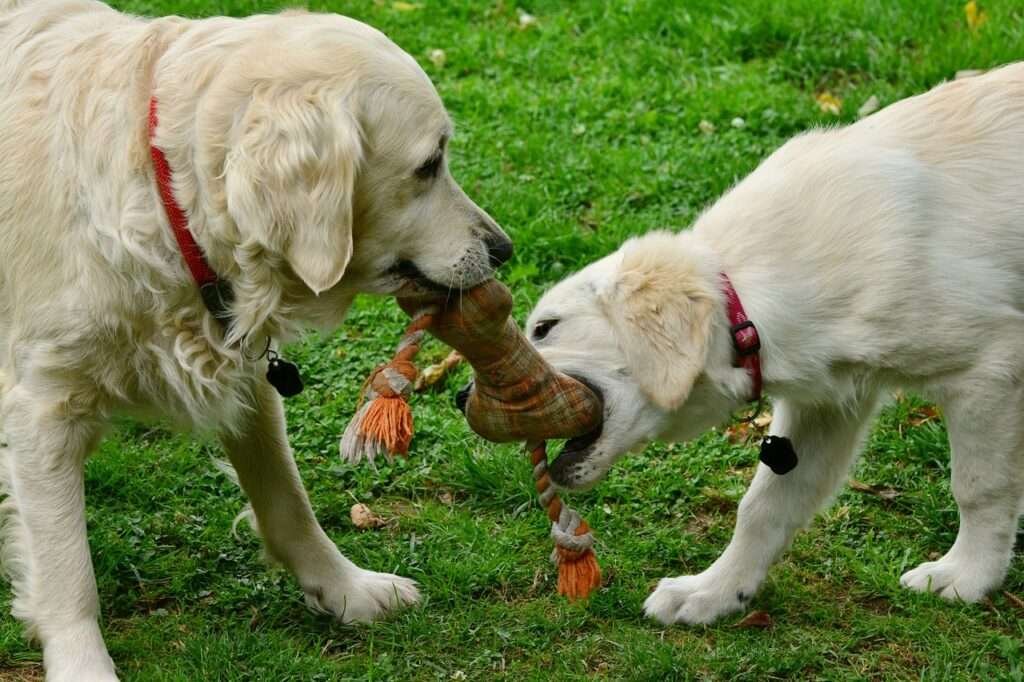As pet owners, we all want our dogs to be happy and healthy. One of the key aspects of keeping your dog healthy is making sure they are getting the right amount of food. Underfeeding your dog can lead to various health issues, some of which can be serious. I personally never let my dog be underfed, and I hope that no dogs are left underfed.
First, I’ll show you what a lean, healthy dog looks like compared to an unhealthy, sick dog. There’s a significant difference, and it’s essential for people to understand this instead of criticizing owners.

I hope I don’t need to explain this image to you. You can see the clear difference between these two.
Table of Contents
ToggleTop Signs of an Underfed Dog:
1. Weight Loss
One of the most obvious signs that your dog is not getting enough food is weight loss. It’s very easy to identify; just search on Google for the average weight of the dog breed that you have. Compare the numbers; if there is more than a 15 percent difference, then this is a matter of concern.
2. Visible Ribs, Hip Bones, and Spine
To know if your dog is underfed, you should be able to see their ribs clearly. While lean dogs might show some ribs, they also have muscle overlaying them, giving them a different appearance. If you can see pure ribs, your dog is likely underfed. Conversely, if your dog is obese, you won’t feel its ribs when you run your fingers across them. This indicates a thick layer of fat and skin.
3. Low Energy Levels
Dogs are usually quite active and love to play. If you notice that your dog seems unusually tired, lethargic, or uninterested in activities they once enjoyed, it could be a sign of underfeeding. Food provides the energy dogs need to stay active. Without enough food, they won’t have the energy to play, run, or even go for walks. If your dog’s energy levels have dropped, it might be time to check their diet.
4. Poor Coat Condition and Hair Loss
A healthy dog has a shiny, thick coat. If your dog’s coat becomes dull, dry, or starts to thin out, it could be a sign that they are not getting enough nutrients from their food. Proper nutrition is essential for maintaining a healthy coat. Underfeeding can lead to a lack of essential vitamins and minerals that keep your dog’s coat in good condition. If you notice a change in your dog’s coat, it might be due to insufficient food intake.
5. Digestive Issues
Underfeeding can also lead to various digestive issues in dogs. If your dog has frequent diarrhea, constipation, or other gastrointestinal problems, it could be because they are not eating enough. Their digestive system needs a certain amount of food to function properly. When there isn’t enough food, their stomach and intestines can’t work as they should, leading to digestive issues.
6. Behavioral Changes
Dogs can’t tell us when they’re hungry, but they can show it through their behavior. If your dog seems unusually anxious, restless, or is constantly searching for food, it might be a sign that they are hungry. They might start begging for food more often, getting into the trash, or trying to steal food from the table. These behavioral changes are often signs that your dog is not getting enough to eat.
7. Weak Immune System
A well-fed dog has a strong immune system that helps them fight off illnesses and infections. If your dog seems to be getting sick more often, it could be because they are not getting enough food. A lack of proper nutrition weakens their immune system, making them more susceptible to illnesses. Frequent infections or slow recovery from sickness can be a sign of underfeeding.
8. Stunted Growth in Puppies
Puppies need a lot of food to grow properly. If a puppy is underfed, it can lead to stunted growth and development issues. If you notice that your puppy is not growing as expected, it might be because they are not getting enough food. Puppies that are underfed may also have a weaker bone structure and other developmental problems.
9. Changes in Stool
The quality and quantity of your dog’s stool can tell you a lot about their diet. Underfed dogs may produce smaller, harder stools because they are not getting enough food to produce normal stools. On the other hand, they might also produce loose stools if their digestive system is upset from not getting enough nutrients. Keep an eye on your dog’s stool to help monitor their health.
How to Ensure Your Dog Is Getting Enough Food
One of the most common questions in dog care concerns diet, specifically how much and how often dogs should eat. The answers vary based on factors such as the dog’s age, activity level, type of food, and health.

I have a basic feeding chart for those who feed their dogs kibble. For a raw diet, the guidelines differ slightly, suggesting around 5% of body weight for adults and 2.5% for puppies. This chart provides a good starting point to avoid overfeeding or underfeeding. Remember, a dog’s weight can fluctuate with activity, but this is a helpful guideline.
Until they are eight weeks old, puppies should feed on their mother’s milk, so they shouldn’t be adopted before weaning. From the third or fourth week, small amounts of solid food can be introduced. After six weeks, solid food can be given about four times a day, allowing continued access to their mother’s milk. Puppies aged two to three months should either be weaned or in the process of weaning, requiring solid food about four to five times a day. From three to six months, puppies are used to solid food, so their daily rations can be reduced to three times a day. As their development slows after six months and up to their first year, two servings per day are ideal.
It’s essential to make changes to the feeding schedule progressively so the digestive system can adjust gradually. Typically, dogs reach adulthood between one and one and a half years of age, though some very large breeds may take between two and three years. Once dogs are adults, portions should be reduced to one or two times a day, depending on the dog’s individual needs. When changing a dog’s food, it’s important to do so gradually by mixing the old and new food and slowly withdrawing the old food.
As dogs reach old age, feeding frequency should be adjusted according to their health needs. Regular veterinarian visits are crucial during this time to determine the best feeding schedule. Some dogs can self-regulate their food intake, so their food bowl can be left out for most of the day. Meal schedules are recommended for dogs prone to overeating to prevent obesity and other health problems. This is also necessary when offering a homemade diet since such food can spoil if left out.
Monitor Weight and Body Condition
Regularly weigh your dog and check their body condition. You should be able to feel their ribs, but they should not be overly prominent. Your dog should have a visible waist when viewed from above and a slight tuck in the abdomen when viewed from the side. If you notice any significant changes, adjust their food intake accordingly.
Choose High-Quality Food
If your dog is consuming food yet remains thin, they might be lacking sufficient calories or the correct balance of nutrients. This might be because of a diet low in fat or protein, or it could indicate a health problem. The quality of the food you give your dog is just as important as the quantity. Choose high-quality dog food that provides all the necessary nutrients. Look for foods with high-quality protein sources and balanced nutrition. Avoid foods with a lot of fillers and artificial ingredients.
Observe and Adjust
Every dog is different, and their needs can change over time. Regularly observe your dog’s behavior, weight, and overall health. Be prepared to adjust their food intake as needed. If you notice any signs of underfeeding, take action immediately to ensure your dog is getting the nutrition they need.
Underfeeding your dog can lead to serious health problems, but by being aware of the signs and taking proactive steps, you can ensure that your dog remains healthy and happy. Regularly monitor your dog’s weight, behavior, and overall health, and consult your veterinarian if you have any concerns. By providing your dog with the right amount of high-quality food, you can help them live a long, active, and healthy life.



